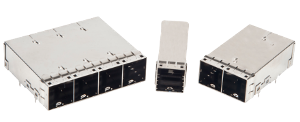Welcome to Meet the Members, a blog series that showcases the innovation and collaboration of our member organizations. Each post features a different SNIA member and explores how they contribute to the advancement of the data storage industry.
 In this edition, we speak with Paul Coddington, Mechanical Engineer at Amphenol Communications Solutions, about his company’s role in the storage ecosystem, their involvement in SNIA, and what excites them about the future of storage technology.
In this edition, we speak with Paul Coddington, Mechanical Engineer at Amphenol Communications Solutions, about his company’s role in the storage ecosystem, their involvement in SNIA, and what excites them about the future of storage technology.
Q: Tell us a little about your company.
A: Amphenol Communications Solutions (ACS), a division of Amphenol Corporation, is a world leader in interconnect solutions for the information, communications, and commercial electronics markets. Amphenol’s interconnect solutions are designed for enterprise-level storage solutions and demanding workloads that may use SAS infrastructure (SAS, SATA, or Tape), PCI Express® (NVMe, PCIe, or CXL®), InfiniBand™, Fibre Channel, or Ethernet.
Q: What inspired your company to join SNIA?
A: Amphenol has been a long-time member of the original SFF Committee and first became a part of SNIA when the SFF Committee transitioned to become the SFF TA TWG, a Technology Affiliate Technical Work Group of SNIA. Amphenol also has been a long-time member of the SCSI Trade Association (STA) which became a Forum within SNIA a few years ago and has since become a SNIA Community.
What has been the biggest benefit of SNIA membership?
We have been able to affordably maintain memberships in STA and in the SFF by becoming members of SNIA. In addition, Amphenol has engaged with many other SNIA member companies at SNIA sponsored events, such as the 24G SAS Plugfest and the SNIA Developer Conference (SDC) events, in helping to advance the development of standards related to data and data storage.
Q: What unique expertise does your company bring to SNIA and the broader storage industry?
A: Amphenol Communications Solutions brings to SNIA and the broader storage industry an interconnect product and interoperability focus that is often overlooked initially by storage device manufacturers and computer system manufacturers that are heavily focused on the performance of their own products.
Q: Which SNIA communities or technical work groups are you involved in, and what value do they provide for your team?
A: I am involved as Amphenol’s primary representative in the STA Community and currently serve on the Board of Directors and also serve as the STA Community Treasurer. The STA Community helps to promote SAS technology and gives their member companies, like Amphenol, opportunities to promote Amphenol’s 12 Gb/s SAS and 24G SAS interconnect products on the SNIA website and at various STA Community events or at industry trade shows in which the STA Community participates.
In addition, I serve as Amphenol’s primary representative in the SFF TWG and currently serve as Co-Chair of the SFF TWG and also serve as the SFF Treasurer. The SFF TWG offers Amphenol an opportunity to contribute to developing industry standard specifications that continue to evolve to handle the demands of today’s industry needs and in the future.
 I also have the privilege to represent the SFF TWG as a TC Advisor on the SNIA Technical Council, a select group of acknowledged industry experts who work to guide SNIA's technical efforts. The Technical Council oversees and manages the SNIA Technical Work Groups, reviews architectures submitted by the Work Groups, and is SNIA's technical liaison to standards organizations.
I also have the privilege to represent the SFF TWG as a TC Advisor on the SNIA Technical Council, a select group of acknowledged industry experts who work to guide SNIA's technical efforts. The Technical Council oversees and manages the SNIA Technical Work Groups, reviews architectures submitted by the Work Groups, and is SNIA's technical liaison to standards organizations.
Q: From your perspective, which market segments or use cases gain the most from SAS technology today?
A: Large-scale data centers are a good use case for the use of SAS technology because of the extremely high reliability and superior scalability of SAS over many other options. Data warehousing is another use case that is perfect for SAS technology due to the scalability and both the lower initial costs and the lower operational costs of SAS-related products and the ability to include the vast storage capacities of cost-efficient and power-efficient SATA drives along with the performance of 24G SAS HDDs and SSDs.
Q: What SAS-based products or solutions does your company offer?
Amphenol offers a wide range of SAS-based products, from connectors to cables. All of these can be viewed at the SAS Products Page on the SNIA website.









Leave a Reply